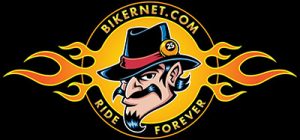
Indian’s venture into three-wheeled territory began in the late 1920s with so-called “traffic cars,” commercial three-wheelers that over the ensuing years produced several variants. As the story goes the genesis for the Dispatch-Tow seen here occurred in 1939 when Indian and a local Springfield, MA Packard dealership teamed up to find a way to have one person instead of two retrieve a car in need of servicing. It seems that Indian’s Charles Franklin took pen to paper and within a scant few weeks a prototype three-wheeler grappled through R&R paces.

Via a yoke-type towing device carried by the Dispatch-Tow its driver could attach his Indian to the car in question, climb into the auto and drive both back to the dealership. When work on the car was complete, once more they hooked up, returned the car to the owner's shop or home, and the serviceman rode the Dispatch back to the shop.

The Dispatch-Tow was spotlighted in automotive journals often in company with luxurious Pierce-Arrow cars and thereby adding to its luster. You could even purchase a very snappy chauffeur’s outfit to be donned by the Tow operator. Ad copy of the day touted: “The Only Means of Getting the Hurry-up Job… The Cheapest Means of Getting Any Job….Cuts Expense of One Man…Is an Effective Advertising Medium…Builds Up Good Will.” The car dealerships’ manpower problem was solved to the tune of some 400 sold around the country in its first year of introduction, 1932.

Pulled by a 45-cubic inch motor, its forward section was basically a Sport Scout with an automotive-style rear end with a fully enclosed differential, beefy enough to tow cars. You had a choice of a standard and larger capacity cargo box to stow tool, gear, whatever you were hauling. Earning a reputation as very reliable and requiring minimal maintenance, the Indian Sport Scout three- legged workhorse came to many a motorists’ aid. It was also popular with police departments and served a variety of commercial applications. It even had its moment in the Hollywood spotlight when Cary Grant and Irene Dunne appeared on one in the 1939 comedy film The Awful Truth which won an Oscar for its director.

However, few Dispatch-Tows survived the effects of time and the elements as the bodies were fashioned from wood then enclosed in tin. The demands of WWII brought the end to the Tow-Dispatch in 1942. This very rare, art décor influenced full fender skirted 1941 example was restored to factory specifications and is now ready to tow and go.

How much is it worth? This bike sold at the June 2008 Joes Garage/MacPherson auction for a total with fees of $61,600.

Specifications:
Engine: 45 cu. in. Sport Scout
Top Speed: 50+ mph


